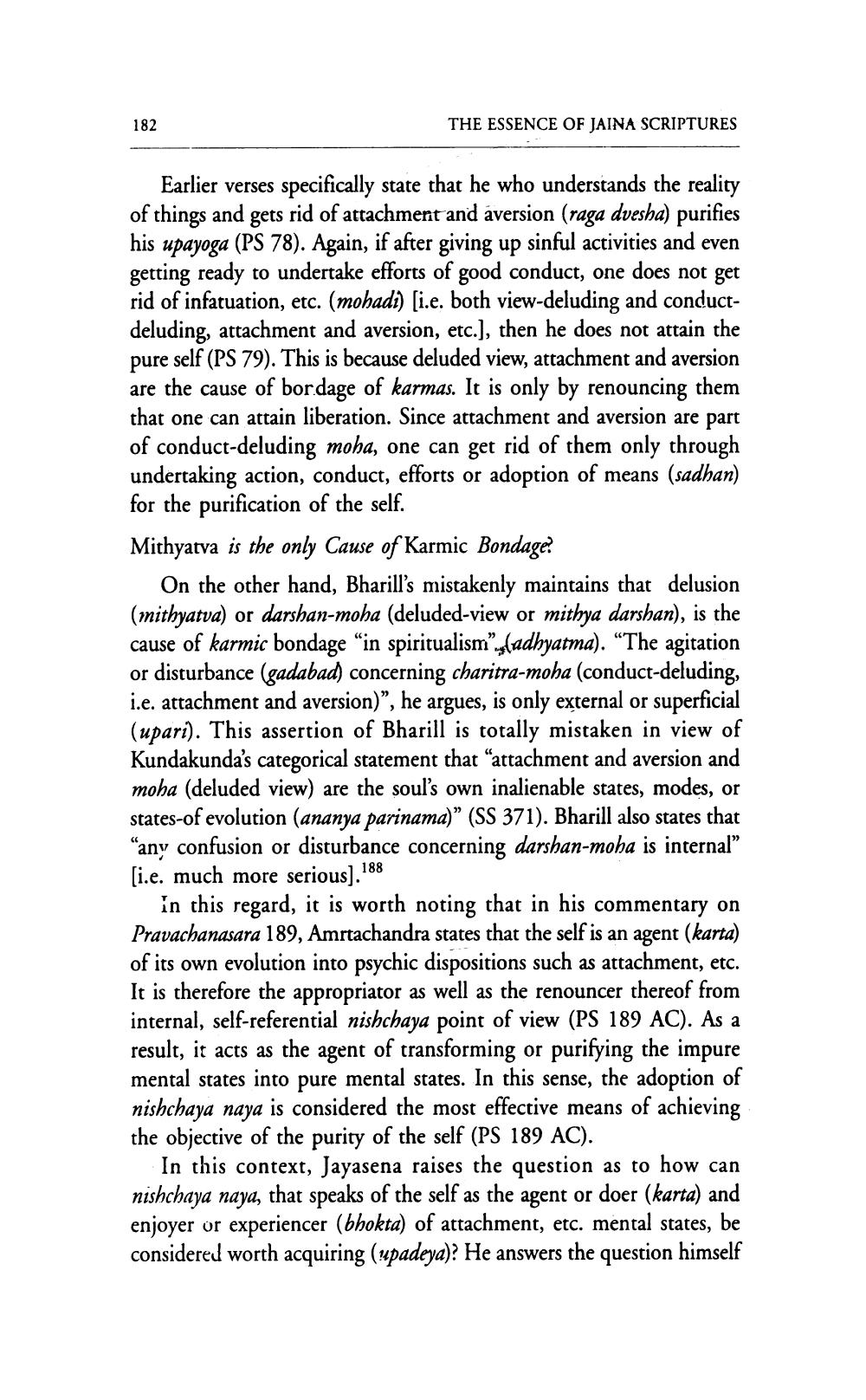________________
182
THE ESSENCE OF JAINA SCRIPTURES
Earlier verses specifically state that he who understands the reality of things and gets rid of attachment and aversion (raga dvesha) purifies his upayoga (PS 78). Again, if after giving up sinful activities and even getting ready to undertake efforts of good conduct, one does not get rid of infatuation, etc. (mohadi) (i.e. both view-deluding and conductdeluding, attachment and aversion, etc.), then he does not attain the pure self (PS 79). This is because deluded view, attachment and aversion are the cause of bordage of karmas. It is only by renouncing them that one can attain liberation. Since attachment and aversion are part of conduct-deluding moha, one can get rid of them only through undertaking action, conduct, efforts or adoption of means (sadhan) for the purification of the self. Mithyatva is the only Cause of Karmic Bondage?
On the other hand, Bharill's mistakenly maintains that delusion (mithyatva) or darshan-moha (deluded-view or mithya darshan), is the cause of karmic bondage “in spiritualism"..(adhyatma). “The agitation or disturbance (gadabad) concerning charitra-moha (conduct-deluding, i.e. attachment and aversion)", he argues, is only external or superficial (upari). This assertion of Bharill is totally mistaken in view of Kundakunda's categorical statement that "attachment and aversion and moha (deluded view) are the soul's own inalienable states, modes, or states-of evolution (ananya parinama)” (SS 371). Bharill also states that “any confusion or disturbance concerning darshan-moha is internal” [i.e. much more serious). 188
in this regard, it is worth noting that in his commentary on Pravachanasara 189, Amrtachandra states that the self is an agent (karta) of its own evolution into psychic dispositions such as attachment, etc. It is therefore the appropriator as well as the renouncer thereof from internal, self-referential nishchaya point of view (PS 189 AC). As a result, it acts as the agent of transforming or purifying the impure mental states into pure mental states. In this sense, the adoption of nishchaya naya is considered the most effective means of achieving the objective of the purity of the self (PS 189 AC).
In this context, Jayasena raises the question as to how can nishchaya naya, that speaks of the self as the agent or doer (karta) and enjoyer or experiencer (bhokta) of attachment, etc. mental states, be considered worth acquiring (upadeya)? He answers the question himself




